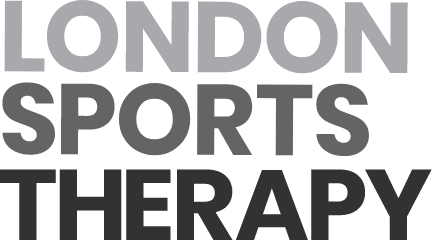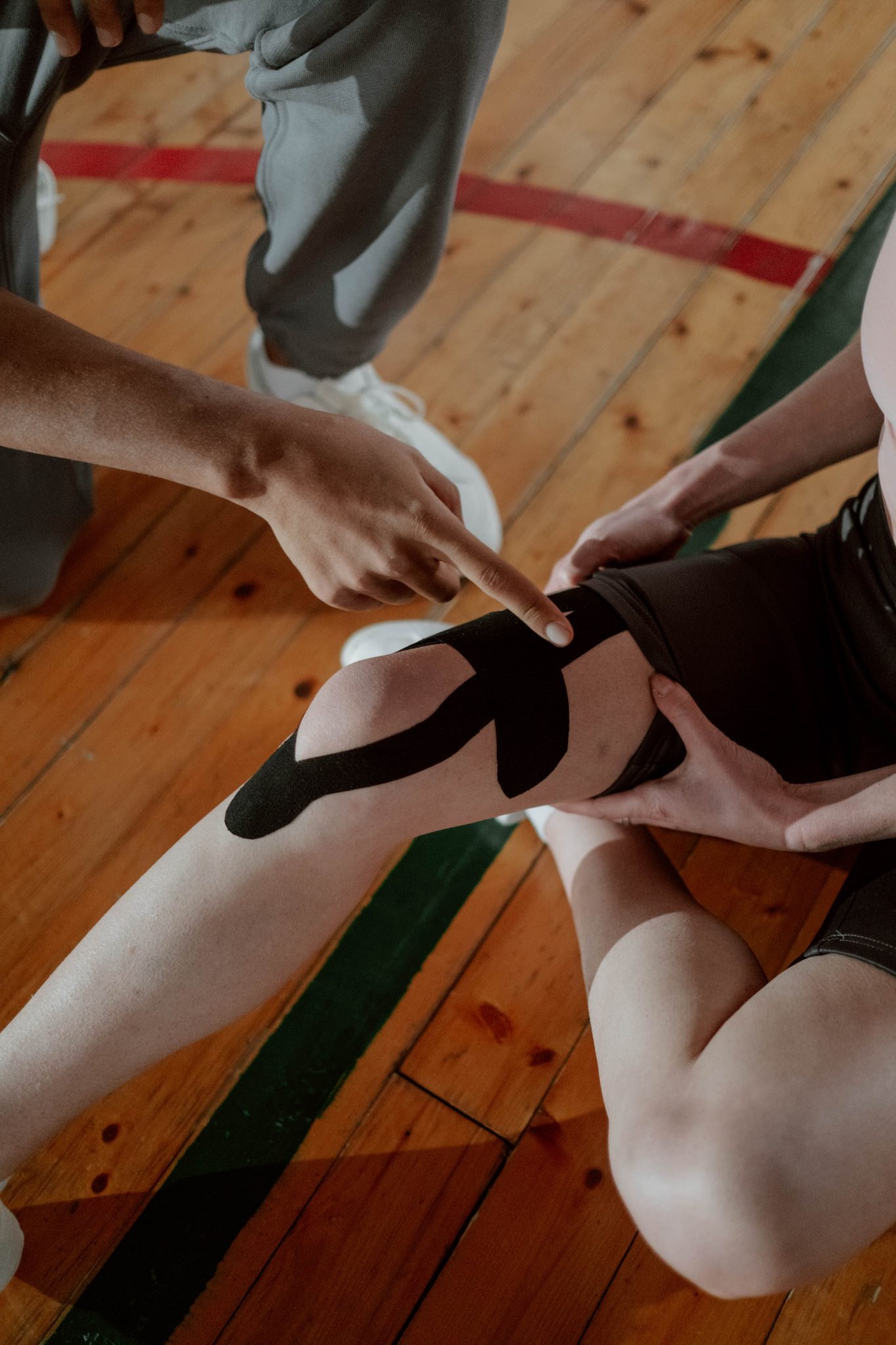Are you struggling after an ACL injury – old or new? ACL injuries are common with athletes of all levels practising both non-contact sports (skying or basketball, for example) as well as contact sports – the most common one being football, particularly in sports with lots of change of direction movements and pivoting.
Did you know that biomechanically, women are up to six times more likely to suffer an ACL injury than their male counterparts? It’s why our associate Richard Stennett, who has extensive experience working with female footballers shares some insight on how our Sports Clinic can help with an ACL injury, both before and after surgery.
So whether your injury is old or new, here’s what we can do for you.
Acute ACL injury – physical therapy pre-surgery
Physical therapy is critical to healing after an ACL injury. As soon as possible after the injury, we recommend you start working on strengthening the muscles that support the knee in order to increase functional stability and obtain full range of motion (ROM). Slowly restoring stabilisation to the knee will also reduce the risk of another injury. So starting re-habilitation as soon as possible is crucial.
If you need surgery, you may be waiting up to 9 months (depending on whether you have private medical insurance). While you may not be able to play sports during that time (at least not professionally), everyday movements that don’t require sharp changes in direction shouldn’t be too much of an issue.
So while you wait for your surgery, at the clinic, we focus on pre-habilitation exercises to strengthen your knee. This will help you avoid short- and long-term compensations and imbalances, which have the potential to cause further issues in the future.
Pre-surgery, we work mainly on strength, balance, and proprioception (the sense of limb position and movement). And we find that the outcome of the surgery is generally a lot more positive when this type of work has been done in advance. In other words, both the functional outcome and the patient’s experience with the surgery are better if you focus on pre-habilitation.
Pre-surgery treatment and education
Seeing someone at the clinic after an ACL injury also gives us a chance to inform and educate our patients. A key component of the support we offer is preparing the patients about what’s to be expected straight after surgery. We particularly like to stress the fact that you don’t need to be scared about loading the knee. As soon as you wake up from the anesthesia and feel able to stand, you can put weight on your knee!
By working together, we give you the plan (in advance) for the hours, days, and weeks following your surgery. And we also get buy-in from you in terms of ‘owning’ the healing of the scar. An easy thing you can do, for example, is to massage the area to help reduce the swelling.
This is particularly important because, after surgery, we want you to focus on sensations other than pain. If you become familiar with identifying other feelings, such as cold, heat, or pressure, for example, you start to desensitise from the pain. And that helps with recovery. Because when we focus on pain, that’s the thing we feel more of! (Ever heard of the saying “What you focus on, expands?”)
The importance of moving as soon as possible
Worrying too much about pain could potentially hinder your recovery, especially if it means you’re missing key opportunities for movement and exercise. We like to refer to this as the ‘low-hanging fruit’ after surgery. Because these strategies may seem small and simple, but we find that patients get a huge payout from them. In other words, these movements may seem of low importance or require low effort, but they reap high rewards.
So through education and support, we give you an insight into what to expect after surgery. Our aim pre-op is to get you as strong as possible and educate you about what to expect from the surgery (and beyond). But we also want to get your buy-in so you can own your rehab. Our job is to support you – not lead you. And we do this by supplementing and completing the information provided by the health authorities, which is typically contextual, generic, and not sufficient.
Post-surgery rehabilitation
A huge misconception surrounding ACL surgery is that the knee is weaker after the operation. This is simply not true! In fact, after surgery, we know that the knee is actually stronger. Without a doubt, your knee will feel swollen and sore, but it’s definitely strong enough to support your body weight. And that’s why the best time to start rehabilitation exercises is straight after surgery.
When you wake up from the anesthetic immediately post-op, the surgical team will get you on their feet to walk around. Quite often, you won’t even need crutches or a frame to walk, but it’s there if you feel you need it.
Ideally, we’d love to see patients up to three times a week immediately after surgery. If not possible, once a week for the first 6 weeks post-operation should put someone on a great trajectory of recovery. Treatment and rehabilitation will help you heal as fast as possible and also avoid further problems down the line. After the initial 6 weeks, we advise you to focus on consistent exercise for the following 6-12 weeks and beyond. And if you’re local to the clinic, we can even recommend a PT to help with your recovery going forward.
Returning to sports
We will help you get back to your desired levels of activity ASAP. And we do that by progressing your exercise and developing your movement capabilities. Return to sports times do vary, but tissue healing will be the longest factor. Usually the new ACL is made from a hamstring graft, which means two of your hamstring tendons are twisted together and fixed to replicate the original ligament. The next most common graft is taken from the patella tendon, which has a different healing process. Because the tendon needs to change its property from tendon to ligament (i.e. new ACL), the cellular structure has to change, and this can take over a year.
But as long as your knee is strong, and has good functional stability, and movement (which are measured by a number of outcomes in the gym and comparable to the uninjured leg), returning to exercise shouldn’t be a problem. Naturally, every case is different, but we’ll talk you through your individual circumstances and lay out the road, and plan back to exercising or sport.
Typically, professional footballers will get back to playing competitively around 9 months after the surgery, but they can be back to doing some form of on-field rehab within weeks of the operation.
Old ACL injuries and chronic pain
While Richard often treats acute injuries when working with female footballers, when at the clinic, Josie, Richard, and the team will often see people with old ACL injuries.
Typically, someone with a past ACL injury may ask for an appointment because they lament pain or restrictions. This could be when doing sports or specific movements. Muscle imbalances in other areas of the body and compensations are frequent. And these can affect you for a long time (i.e. years) after surgery and recovery. But the link to the ACL injury may not always be obvious and could be easily missed. In fact, it’s often during the initial consultation and assessment (when we collect the patient’s previous history) that we find out they had an ACL injury in the past. And as it’s often the case, they may have consulted several other specialists about their existing pain without any satisfactory results.
When patients come to see us at the clinic years after the injury
If you have an old ACL injury and present any pain, restrictions, or discomfort that impacts not only your physical activity and exercise but also your daily life activities, we can help.
Because of our holistic approach and the assessment modality we employ, we do a whole-body assessment. Our aim is to treat the driver of your problem, which other professionals could have easily missed. For example, if someone presents a problem in their shoulder, and we know they had an ACL injury in the past, we often need to go back to strengthening the knee. Over time, the patient will see an improvement in their shoulder pain. It may sound counterintuitive, but that’s how it works!
Also, depending on where the graft for the surgery was taken, someone with a previous ACL surgery might present hamstring injuries. If they load up through their glutes too much, for example, they might experience pain, tightness, or discomfort. This could show up in their lower back or neck and could even suffer from frequent tension headaches and migraines.
Obviously, imbalances can cause a knock-on effect on other movements. And that’s particularly true if you don’t do rehab (or not soon enough after surgery) or don’t address the issue directly. When strength and movement aren’t symmetrical, you can present injuries elsewhere as well as different loading patterns. And these, in turn, increase the risk of re-injuring your ACL. So in order to stop this vicious cycle, it’s important we identify and treat the main driver of your pain. This will help you see significant improvement as soon as possible.
Related posts
You may be interested in the blog posts:
How Old Injuries can Affect the Way You Move
Virtual physiotherapy assessment to treat your pain – a case study
The Benefits of Early Rehabilitation After Surgery or an Injury
About Richard Stennett – author of this article
Richard is passionate about ultra-marathon running and supporting women’s football. As well as working with Josie and the team at the clinic, Richard acts as the ‘clinical and rehabilitation lead’ for Dorking Wanderers Women’s Football Club. In that capacity, he works with athletes aged 16-30+. Richard has extensive experience in acute trauma and injury profiles that impact footballers.

